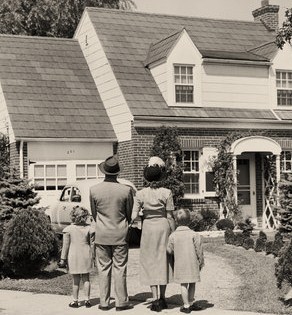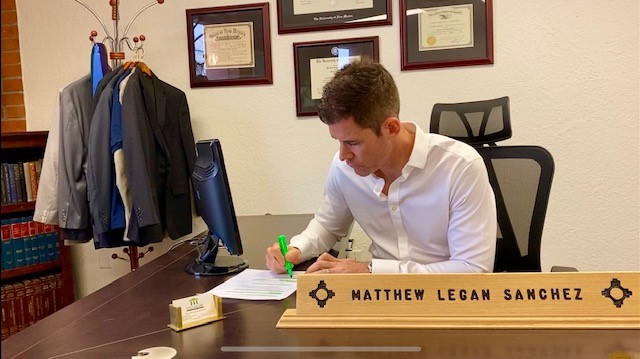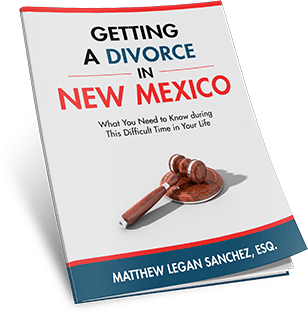
Community and Separate Property in Divorce
HOW SEPARATE PROPERTY CAN BECOME COMMUNITY PROPERTY IN ALBUQUERQUE, NEW MEXICO
Are you curious about how your hard-earned money, property and assets will be split after a divorce? The first step towards answering this question begins with distinguishing separate property from community property in Albuquerque, New Mexico.
New Mexico is a community property state. Generally speaking, this means that any assets, debts or property that were accumulated during the marriage – other than gifts, inheritances, bequests, or pain and suffering awards – are considered community property and will be split 50-50 upon divorce.
On the other hand, generally speaking, separate property means all of the assets and debts that were accumulated before the marriage.
As you can see, the distinction between separate and community property is pretty cut and dry. Here comes the curve ball – in certain situations one’s separate property can be transformed (transmuted) into community property. This situation generally arises when assets or money that were previously separate property are thrown into the marital stew and then stirred by the process of commingling.
Let’s take a look at the most common ways that separate property transforms into community property through commingling.
I. Separate & Community Bank Accounts
The process of separate property becoming community property often begins with separate funds being placed into a joint bank account.
Placing separate funds into a joint banking account does not transform the separate property into community property unless there is also a finding of intent to do so. Moreover, simply opening a joint account, by itself, does not establish a gift or trust of separate monies.
Nevertheless, separate funds can be transformed into community funds when the funds are mixed in a joint account to such a degree that it is impossible to latter distinguish the separate and community funds.
Commingling “Mixing” Bank Accounts
In some instances separate funds can transform into community funds through the process of commingling. Commingling is another word for mixing and takes place when separate funds are mixed into a joint account and become so intermingled with community funds that they cannot be traced or identified. According to Albuquerque, New Mexico law, the commingling of separate funds with community funds can demonstrate that the owner of the separate funds intended to make a gift of those funds to the community. See Nichols, 98 N.M. 322
Let’s examine a few New Mexico cases to better understand how separate funds can become community funds through the process of commingling.
In Wiggins v. Rush, husband and wife held joint bank accounts during their marriage. All of the couple’s money – both separate and community – was deposited into a joint account making it impossible for the Court to distinguish separate from community money. The New Mexico Supreme Court stated that: “Nothing appears in the record to indicate that the separate funds of either Mr. or Mrs. Wiggins were traceable in their joint account. The effect of this commingling [mixing of funds] was that any separate funds deposited in the joint account were transmuted [transformed into community funds].”
In another case, Nichols v. Nichols, Husband sold his sole and separate home and deposited his separate funds into the couple’s joint account – with wife having unlimited rights of withdrawal. The couple then used a portion of this money to purchase a new home. The couple also used a portion of the money from time to time to pay for living expenses – with wife writing checks for a majority of the purchases. The couple subsequently separated.
Husband argued that the funds were traceable and therefore remained separate property. Wife countered that Husband’s separate funds were transformed into community funds through commingling.
The Court ultimately sided with Wife, ruling that Husband’s separate funds were transformed into community funds. The court reasoned that based on the facts above, Husband intended to make a gift to the community by commingling his separate funds with community funds.
II. Separate & Community Homes
A common question that I hear involves homes that were purchased before marriage, and whether the other party has any claim to the home upon divorce.
Homes that are purchased before marriage, or during marriage with separate funds, are considered separate property. Nevertheless, when community labor or funds enhance the value of the separate property, a portion of the enhanced value becomes community property that is subject to distribution.
Although the community is entitled to a portion of the enhanced value, it is also the community’s burden to prove that community labor/funds increased the value of the separate property (such as principle payments, remodeling, etc.) It is not enough to demonstrate that community money paid for “living expenses” such as mortgage interest, property taxes, insurance, or any other fees that did not generate a measurable increase in the home’s value. Additionally, one must prove that community labor led to a measurable increase in the home’s value.
As stated above, the value of the separate property must be measurably increased due to community funds or labor. In Dorbin v. Dorbin, the New Mexico Supreme Court established a four-step formula to determine how much of the home’s enhanced value is considered community property.
1. Take the value of the home at the date of marriage [Fair Market Value of home].
2. That pre-marriage value is then added with the home’s rate of return (i.e. the profit on the investment over a period of time). The total of the fair market value at the time of marriage [+] the rate of return during the marriage is considered separate property.
3. The fair market value of the asset is determined from the date of divorce.
4. The community interest in the home [=] the fair market value of the home at the time of divorce [–] the value of the home at the date of marriage [+] rate of return of the home during the marriage.
To put the factors described above into context, let’s examine a New Mexico case where the court ruled that the community was not entitled to a portion of the home purchased during the marriage with separate money.
In Martinez v. Block, wife inherited a sum of money during her marriage [separate funds]. Wife used a portion of her inheritance to purchase a house for $85,000. The home was purchased exclusively from wife’s inheritance [sole and separate funds]. Wife then used $93,486 of her separate funds to extensively renovated and improve the property. Husband and wife divorced. The parties agreed that the value of the home at the time of the divorce was equal to the purchase price [$85,000] + renovations [$93,486] = $178,486.
Husband argued that the community was entitled to a portion of the enhanced value of the home, because his labor increased the value of the home. Wife countered that the community is only entitled to a portion of the enhanced value when the community can prove that community funds or labor actually enhanced the value of the property.
The New Mexico Court ultimately ruled in favor of wife because husband failed to prove that his labor increased the home’s value. The court reasoned that the community is only entitled to a portion of the enhanced value of separate property when the increased value can be traced to community funds and labor. Because the husband and wife agreed that the value of the property was equal to wife’s separate funds that were used to purchase and then renovate the home, husband’s labor did not actually enhance the home’s value. Based on this fact, the community was not entitled to any interest in the home.
The court stated that community labor devoted to a residence is comparable to community funds that are used to pay interest, taxes, insurance, or any other expense associated with maintaining an asset (i.e “living expense”). Additionally, husbands and wives have a mutual duty to support one another, including the use of separate funds/labor when necessary or appropriate. In the end, because a measurable asset – or increase in value – was not acquired through husband’s labor, the community was not entitled to a share in the increased value of wife’s separate property.
III. Separate & Community Businesses
The community is also entitled to a lien against a spouse’s separate business when community funds or labor enhances the business’ value. In this vein, the labor of both parties belongs to the community rather than to the individuals, but community labor alone does not result in a community interest in the business. Instead, the community labor must lead to a measurable increase in the value of the business.
in Mitchell v. Mitchell, a New Mexico court examined the enhanced value of a business through community funds/labor. In Mitchell, Husband argued that his business as a CPA was his sole and separate property because his practice was opened before the marriage.
The court ruled that the enhanced value of the business – the value of the business from the time of marriage to the time of divorce – could be traced to a measurable amount of community labor.
The court supported its ruling by reasoning that at the time of the marriage, husband’s CPA practice showed the annual income of about $600 and included a couch, calculator, and small office equipment. At the time of the couple’s divorce, Husband’s CPA practice reported gross receipts of $153,968. Because of these facts, the court ruled that the value of Husband’s business was due almost entirely to Husband’s labor during the marriage (i.e. community labor). Therefore, the increase in value was likewise community property.
The court went one step further and ruled that the company had also gained a measurable amount of goodwill that was also community property.
IV. Separate & Community Money Spent on Living Expenses
The Albuquerque, New Mexico Supreme Court has also held that one’s separate money that is spent towards the community for food, clothing, entertainment, travel, etc. – but where no tangible and measurable asset is acquired – will not be reimbursed. In other words, any community/separate funds that are spent during the marriage must be traced to a specific and measurable asset.
In many situations a husband or wife acquires separate money during the marriage, by inheritance, gift, personal injury settlement, etc. The money is then used for vacations, paying off debt, or any number of everyday living expenses. In these situations the separate money that was used during the marriage is lost and cannot be recovered in divorce.
The N.M. Supreme Court believes that Community/Separate Money that is spent on living expenses is not reimbursed because husbands and wives have a mutual duty to support one another – including the use of separate funds where necessary or appropriate to support the community.
(505) SANCHEZ IS HERE TO ANSWER ALL OF YOUR QUESTIONS ABOUT SEPARATE PROPERTY BECOMING COMMUNITY PROPERTY IN ALBUQUERQUE, NEW MEXICO
Do you still have questions about separate property becoming community property Albuquerque, New Mexico? Divorce cases that involve property distribution often require the experienced hand and knowledge that comes with years of courtroom practice. Matthew Legan Sanchez has the experience needed to handle your unique case and answer any question about separate property becoming community property in Albuquerque, New Mexico. Sanchez can be reached by calling (505) SANCHEZ.

Separate property becoming community property in Albuquerque, New Mexico






